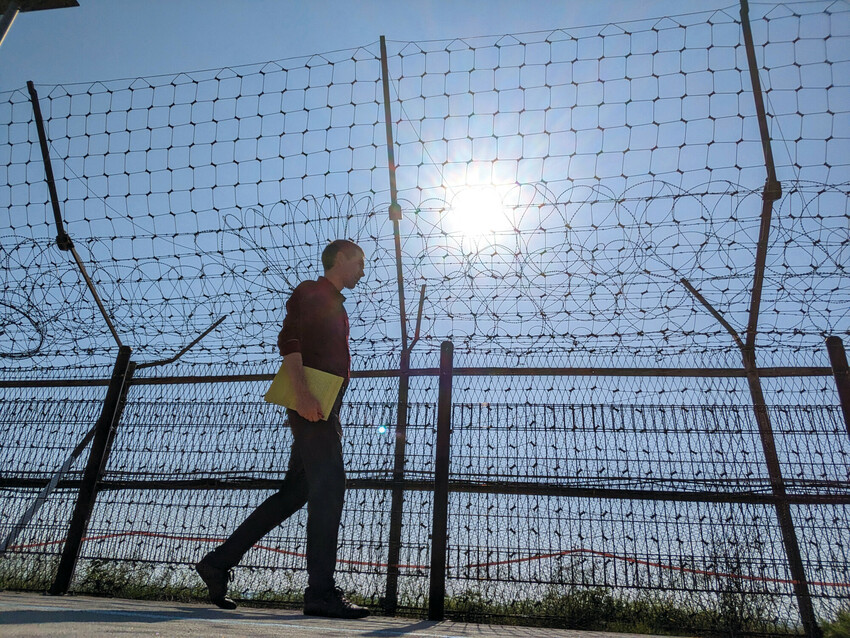The path to peace
Serim Park writes about ways we can find opportunities for peace and reconciliation on the Korean Peninsula

The main obstacle to peace on the Korean Peninsula is often seen as the conflict between two Koreas. But is the conflict only between North Korea (the Democratic People’s Republic of Korea or DPRK) and South Korea (the Republic of Korea or ROK)?
The Korean Peninsula, marked by political tension and division, has been a focus for international attention for decades. Amidst the complex geopolitical landscape, there emerges a need for a powerful force for change and reconciliation.
On July 27, 1953, there was an armistice agreement signed by the U.S., North Korea, and China for a ceasefire in the Korean War, but no formal peace agreement was ever signed, meaning there has been no official end to the war status. After 70 years, the path to peace on the Korean Peninsula is still unclear.
Peace and reconciliation on the Korean Peninsula are essential for several reasons. First, families who have been separated for decades could be reunited, easing the pain and suffering caused by decades of division. Seung Suk Byun, born in 1929, left North Korea around the time of the war but has a daughter who remained. Byun describes a heart-wrenching letter from his daughter where she said, “I’m writing this to my father who I miss even in my dreams.” His daughter lamented the existence of the armistice line dividing North and South Korea saying, “Please, armistice line, please leave.” (koreanamericanstory.org)
The second reason reconciliation is important is because officially ending the war would bring stability to the region, allowing for demilitarization and denuclearization, and reducing the risk of wider conflict. And, finally, a lasting peace would expand opportunities for humanitarian aid and collaboration in areas such as education.
The current administration in South Korea is taking a hard foreign policy stance against North Korea. South Korea has emphasized a stronger military posture and closer security cooperation with the U.S. and other allies to counter North Korea’s nuclear threat. This has included advancing missile defense systems and conducting joint military exercises with the U.S., which had been scaled back in previous years. At the same time officials in North Korea have publicly stated they are abandoning the goal of reconciliation and unification.
What does the U.S. have to do with peace on the Korean Peninsula?
As a major ally of South Korea, the U.S. plays a crucial role in bringing peace on the Korean Peninsula. The Biden administration has taken part in diplomatic initiatives to discourage the development of nuclear weapons on the peninsula and has stated support for inter-Korean communication. However, the strategy of putting pressure on North Korea through joint U.S.-ROK military drills and U.S. economic sanctions, has exacerbated regional tensions and failed to result in an improved environment for reconciliation.
What can people of faith in the U.S. do?
Reconciliation often starts from small steps, but we must keep intentionally moving forward. Two bills introduced in the U.S. Congress—the Peace on the Korean Peninsula Act and the Divided Families Registration Act— would be a good start. (Read more about both bills here.)
What small steps can you take?
• Reach out to your members of Congress to urge them to support the bill. Tell them why you believe fostering peace on the Korean Peninsula is important. (Visit npjm.mcc.org for current action alerts.)
• Participate in or organize public awareness campaigns and events to highlight the importance of the bills. Use social media or community events to garner wider public support. (Download an advocacy toolkit)
• Join campaigns such as the annual Korea Peace Advocacy Week
In the prophetic words of Martin Luther King Jr., “Peace is not merely a distant goal that we seek, but a means by which we arrive at that goal.” Peace is not only a destination, but also the path we must take to achieve it.
Pray about peace using these worship resources.
Learn more about policy principles and statistics related to the Korean Peninsula.
Download Planting seeds of peace (Peace & Justice Journal, Spring/Summer 2024)

